Camellia
Camellia japonica, Camellia reticulata, Camellia sasanqua
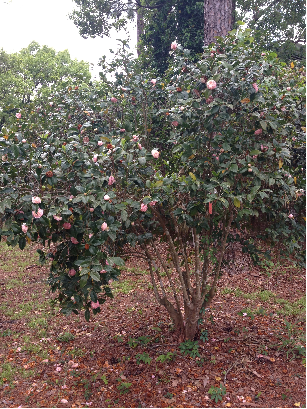
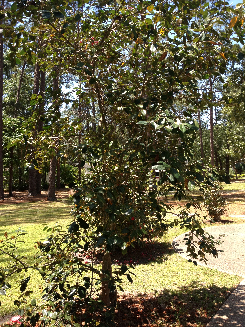
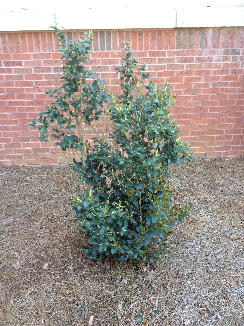
[From left to right: Camellia japonica, Camellia reticulata, Camellia sasanqua]
(Photos by Hatel Patel)
View the Location on Campus
Taxonomy (1,4,5)
Classification: Angiosperm, dicot
Family: Theaceae
Common name: Camellia, Japonicas (Camellia japonica); Sasanqua camellia (Camellia sasanqua)
Varieties: Yuletide (Camellia sasanqua)
General Information (1,2,3,4,5)
Region of Origin: Japan and China
USDA Plants Hardiness Zones: 6-9 (C. japonica), 8-10 (C. reticulata), 7-9 (C. sasanqua)
Growth Habit: Shrub
- Size: 20 feet tall (C. japonica), 8-10 feet (C. reticulata), 4-15 feet (C. sasanqua)
- Deciduous/Evergreen: Evergreen
- Flowering: Late winter to early spring (C. japonica), October-December (C. reticulata), fall to early winter (C. sasanqua)
- Fruiting:
Diagnostic Characteristics
Leaves (3,4,5,6)
- Arrangement: Alternate
- Simple/Compound: Simple
- Shape: Ovate to elliptic
- Other: 2-4 inches long (C. japonica); 4 inches long and serrate (C. reticulata); 1-3 inches long, pubescent, roundly toothed (C. sasanqua)
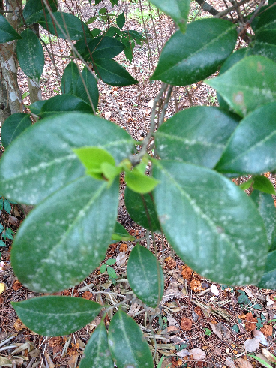
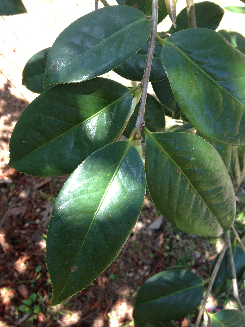
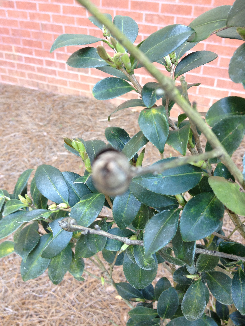
[From left to right: Camellia japonica, Camellia reticulata, Camellia sasanqua]
(Photos by Hatel Patel)
Stem/Bark (6)
- Color: Brown
- Texture: Black lenticels (C. japonica); Pubescent (C. sasanqua)
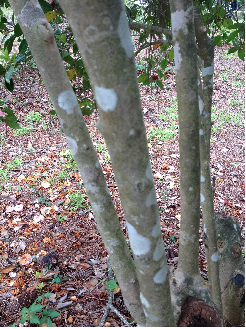
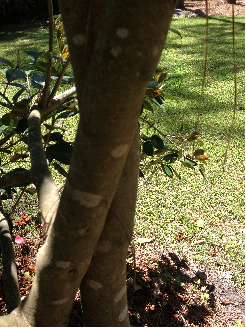
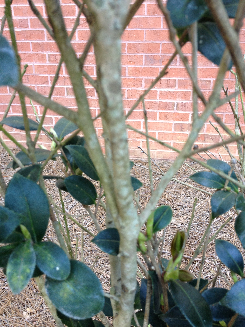
[From left to right: Camellia japonica, Camellia reticulata, Camellia sasanqua]
(Photos by Hatel Patel)
Flower (1,2,4,5)
- Perfect/Imperfect:
- Color: White, pink, red (C. japonica); crimson red (C. reticulata); bright red (C. sasanqua)
- Size: 2-5 inches (C. japonica), 7 inches (C. reticulata), 1.5-4 inches (C. sasanqua)
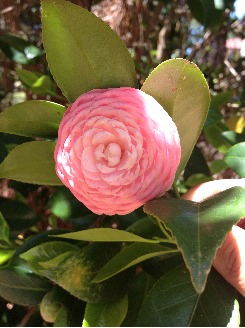
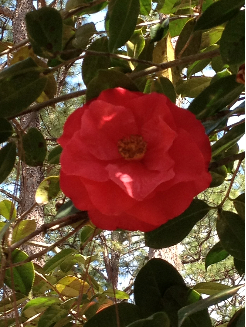
[From left to right: Camellia japonica, Camellia reticulata]
(Photos by Hatel Patel)
Fruit (2,4,6)
- Fruit type: Dry, woody capsule
- Size: 1 inch
- Color: Brown
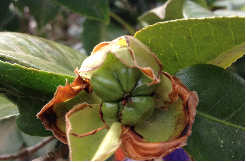
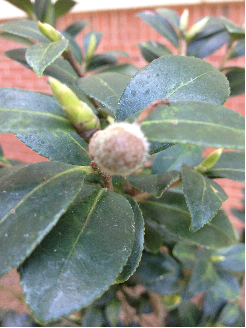
[From left to right: Camellia japonica, Camellia sasanqua]
(Photos by Hatel Patel)
Horticultural Information (1,4,5)
- Light: Partial shade
- Moisture:
- Soil type:
- pH: Acidic
- Maintenance: Easy to care for
- Landscape Uses: Borders, formation hedges, accents, around houses, ground cover
Interesting Facts (1,4,5,7)
- This genus was named for George Kamel, a Jesuit missionary who traveled to Asia and studied the flora of the Philippines.
- Camellias represent longevity and faithfulness.
- Camellia reticulata has been cultivated since at least 900 A.D.. Today, there are over 100 named cultivars or varieties.
- Like the Japonicas, Sasanqua have been selected and hybridized into dozens of forms that vary immensely in flower color and size and shape.
- The Japanese use the leaves of Sasanqua to make tea
References
1) Christman, Steve. (1996). Camellia japonica. Retrieved from http://www.floridata.com/ref/c/cam_jap.cfm
2) Wyman, D. (1969). Shrubs and Vines for American Gardens. Toronto, Canada: The Macmillan Company
3) http://www.ces.ncsu.edu/depts/hort/consumer/factsheets/shrubs/camellia_japonica.html
4) Missouri Botanical Garden. Retrieved from http://www.missouribotanicalgarden.org/gardens-gardening/your-garden/plant-finder/plant-details/kc/d526/camellia-reticulata-dataohung-crimson-robe.aspx
5) Scheper, Jack. (1996). Camellia sasanqua. Retrieved from http://www.floridata.com/ref/c/came_sas.cfm
6) Dirr, M.A.(1990). Manual of Woody Landscape Plants: Their Identification, Ornamental Characteristics, Culture, Propagation and Uses(4th ed.). Champaign, Illinois: Stipes Publishing Company.
7) Monrovia. (2013). Yuletide Camellia. Retrieved from http://www.monrovia.com/plant-catalog/plants/672/yuletide-camellia.php.
Edited by Jessica Bartek
Department of Biology
-
Room 2035, 2nd Floor
Bailey Science Building -
Mailing Address
1500 N. Patterson St.
Valdosta, GA 31698 - Phone: 229.333.5759
- Fax: 229.245.6585
Monday - Thursday
8:00AM until 5:30PM
Friday
8:00AM until 3:00PM
Saturday - Sunday
Office Closed